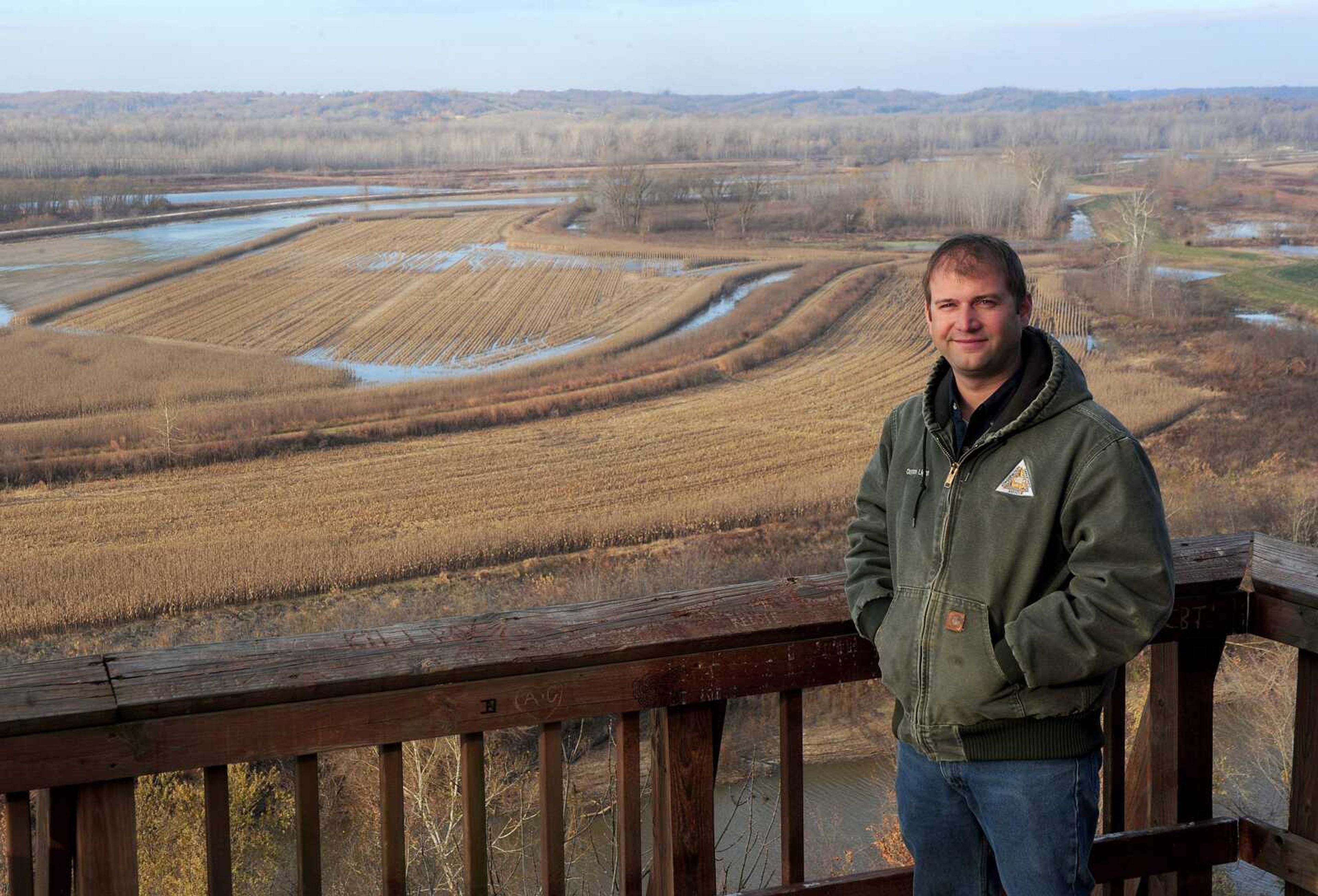MCBAINE, Mo. -- Clayton Light pulls his state-issued pickup truck over to the side of a gravel road, rolls down the window and sticks his head into the early morning air.
It's still dark around 6 o'clock, but a flock of mallard ducks is flying overhead and Light gives them a once-over while listening for shotgun blasts to thump the sides of Eagle Bluffs, a 4,300-acre conservation area where ducks are pouring in by the day.
"Duck season means cold mornings, shotguns and cornfields. These birds here, they're flying over to our refuge, which is good," Light said, motioning away from the 20-some companies of hunters sprawled out across the valley between the bluffs. "I've been wanting these birds to use that side."
Light, 28, took over as Eagle Bluffs manager Oct. 1, just in time for duck hunting season. And while that sounds like a flashy job -- some people, he says, compare it to a Midwestern crocodile hunter or Yosemite Sam -- that's not quite the case.
"Most of my job here is a lot of thinking," he said. "You get good at counting ducks."
Light worked his way up through the ranks of the Missouri Department of Conservation, starting as a trash collector during high school in Freeburg and eventually working his way into field exercises.
He helped relocate prairie chickens from Kansas back to Missouri habitats and worked to reintegrate elk into the state's ecosystem as well.
Those adventures have wound down now that Light has settled in at Eagle Bluffs, he said.
Rise and shine at 3 a.m. to supervise the daily duck hunting draw an hour later, then tabulate numbers to monitor the waterfowl populations and "work on some habitat."
Eagle Bluffs has 61 water utilities that allow biologists such as Light to manipulate the grounds, making the wildlife reserve a giant scientific sandbox.
With the turn of a valve, he can flood one field at the reserve and dry out another, luring waterfowl with lush vegetation. That allows scientists to observe different species' behavior and chart everything from diet to migration patterns.
"They've got 365 days a year" at Eagle Bluffs "that they can choose to dry a pool out or flood a pool up," said John George, conservation department regional wildlife supervisor. "At the heart of it, they can make a lot of decisions in changing habitat."
Those changes are making ducks happy, Light said, and as a result hunters are happy, too. As the weather gets colder, more birds flock to Missouri on their route south from the upper Great Plains.
Light said his goal is to make them hang around McBaine, making him more of an avian innkeeper than environmental roughneck. He said he tries to hunt at different pools, or flooded fields, all over the grounds several times a week so he can see how the birds behave and advise hunters where to find the best game.
"That's got a nice stretch of open water," he said swirling a finger over a map. "And that's some good corn. You can hide pretty good in there."
Even an inch or two of difference in water level can determine whether the bluffs host 5,000 birds or closer to 12,000. "It's crazy what you can do playing around with habitats," he said.
But those same areas are disappearing faster than Light and other biologists can replenish them. It's a refrain about habitat loss that conservationists sing pretty often, George said.
Increasingly, scientists are having to monitor visitors more than they do native creatures.
"I think a lot of the study now is managing people rather than other species to have both enjoyment and habitat health," George said.
A month and a half into his new role, Light said he sees those two forces coexisting well at Eagle Bluffs. Hunter and hunted are getting along well, at least as far as the numbers are concerned.
Light is crunching more digits now than ever before. "Duck hunters and waterfowl areas," he said, "they want to know the stats on everything."
Connect with the Southeast Missourian Newsroom:
For corrections to this story or other insights for the editor, click here. To submit a letter to the editor, click here. To learn about the Southeast Missourian’s AI Policy, click here.







